by Ian Skellern
Let’s get the obvious out of the way first: it’s very unlikely that even EMC’s proud parents − Urwerk co-founders Felix Baumgartner and Martin Frei − would describe their EMC progeny as “pretty.”
And that’s okay because it wasn’t meant to be “pretty.” The original EMC was designed from the outset to be a platform for validating Urwerk’s mechanical/electronic hybrid concept; to be a technical instrument rather than a full-fledged conventional wristwatch.
But EMC2 now looks like a wristwatch. I still wouldn’t call it pretty, not while sober anyway, but “good looking in a macho way” isn’t so much of a stretch. And both the name “Time Hunter” and that olive green color (more on that below) reflect a military theme that its shape reinforces. EMC2, especially the green version, does look like a something you would not be surprised to find on a Navy Seal’s wrist.
And to be honest, with EMC2 if you are hung up on how it looks you are most likely missing the whole point of this revolutionary timepiece anyway: its brains. EMC2 is one of the most intelligent mechanical watches on the planet – if not THE most intelligent watch. And it was certainly one of the first intelligent mechanicals.
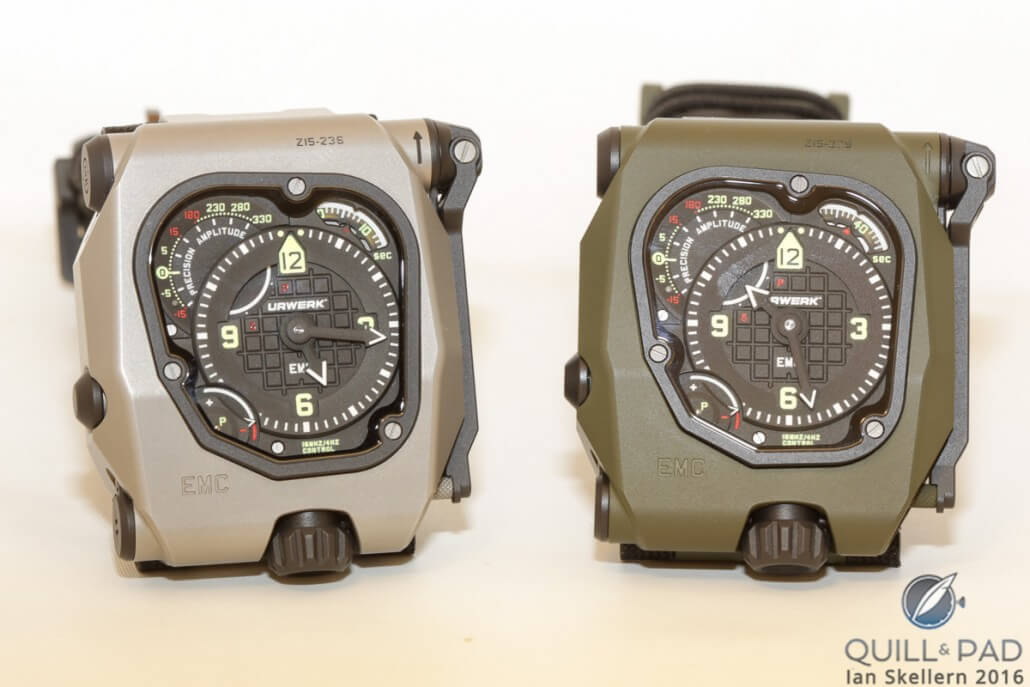
The two launch models of the Urwerk EMC2 in natural titanium/steel and green ceramic-coated titanium/steel
With EMC2 Time Hunter, Urwerk has softened the more industrial design of the original EMC by slightly rounding the sharp edges of the case, replacing the multiple dials with one large dial with nicely legible central hours and minutes. The power reserve indicator, seconds, and EMC displays surround the main time display, hanging around the periphery on the main dial.
But the big news is that as well as being able to monitor the precision of the movement on demand, EMC2 can also display another important factor in determining the health of a movement: the balance amplitude.
EMC was the world’s firt mechanical wristwatch offering a precision display and EMC2 follows that with a new world first for displaying the balance amplitude.
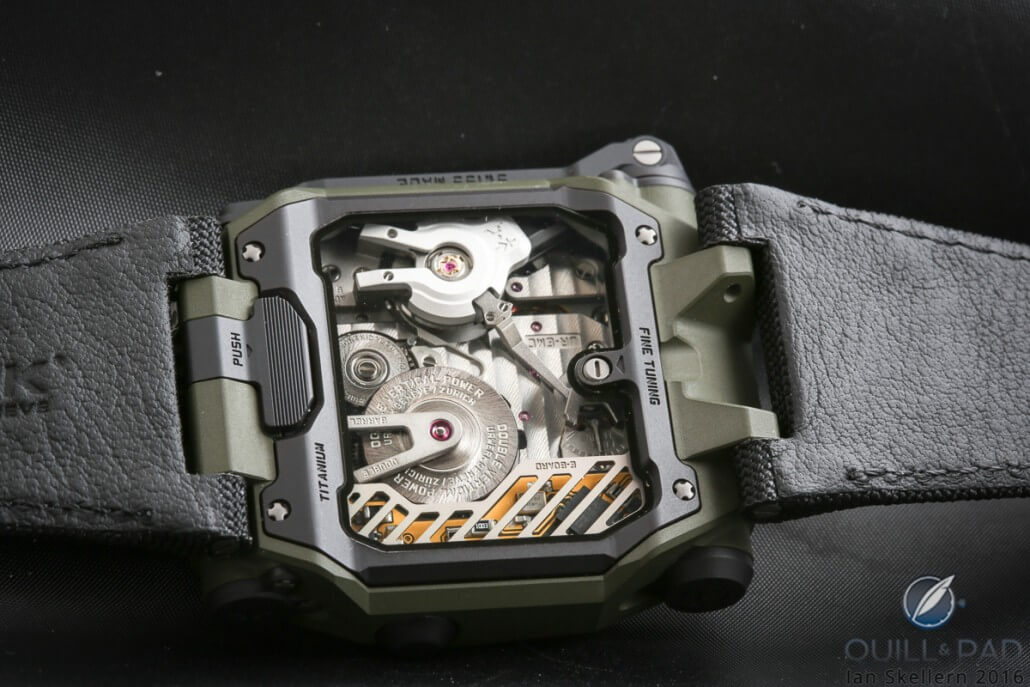
View of the back of the Urwerk EMC2 with the crown pusher on the left, precision fine tuning screw on the right, white balance cover with optical sensor at the top, and micro processor at the bottom
Why balance amplitude matters
The balance − balance wheel and hairspring − of a wristwatch performs the same function as the pendulum of a grandfather clock in that it oscillates (swings) back and forth at a regular rate. It is the regularity, which is also known as isochronism, of the swing or oscillation that is responsible for the accuracy of the timepiece.
The balance is the very heart of a mechanical movement. A mechanical watch is, after all, nothing more than a machine for counting beats (4 Hz means four beats per second) and then translating that number of beats into seconds, days, months, years, leap years, moon cycles, astronomical cycles, and motorcycles. (Okay, that last one was just to see if anyone is still reading.)
Every indication on a mechanical watch is “simply” a representation of the number of beats of the balance in whatever time interval we predetermine.
Like the majority of modern mechanical movements, the balance in EMC2 oscillates at 4 Hertz, that’s four complete (there and back) or eight half oscillations per second. That’s nearly 2.5 million oscillations a week for a tiny wheel mounted on an even tinier axel called the balance staff.
So you can imagine that even the slightest degradation of the oil lubricating the ruby bearings supporting the balance will increase friction and slow the balance wheel down. And that will reduce the amplitude of the balance.
Amplitude is how many degrees a point on the balance wheel rotates throughout a full oscillation. Amplitude is the equivalent of how big an angle a pendulum swings though.
It’s quite common for the amplitude of a balance wheel to actually increase for the first few months that a new watch is being worn as the bearings and mechanisms settle in and the lubricating oil spreads more evenly. But oil very slowly degrades and amplitude generally decreases over the years.
What does EMC2 actually do?
We know that EMC2 has a balance wheel oscillating at 4 Hz, but how do we know that it is exactly 4 Hz when the slightest difference will result in a less accurate movement?
What EMC2 does is compare the 4 Hz balance with an inbuilt 16,000,000 Hz (16 million, that’s not a typo) electronic reference oscillator for a few seconds and then calculate and extrapolate the precision in +/- seconds per day.
The timing can then be easily adjusted by means of the precision fine tuning screw on the back of the case.
How does it work?
EMC2 is a 100 percent fully mechanical wristwatch. The electronics have absolutely no effect on the movement at all, but are simply used on demand to monitor the balance and provide ancillary indications: precision and amplitude.
It’s very easy to use EMC2: just wind the crank, push the button, and read the indications.
In fact you don’t even need to read the indications because as if to say “just because we can!” Urwerk has included LEDs under the precision scale that signal green for all okay, or red if either (or both) the precision or amplitude of the movement falls outside the acceptable parameters of 180° to 330° for amplitude and +/- 10 seconds per day for precision.
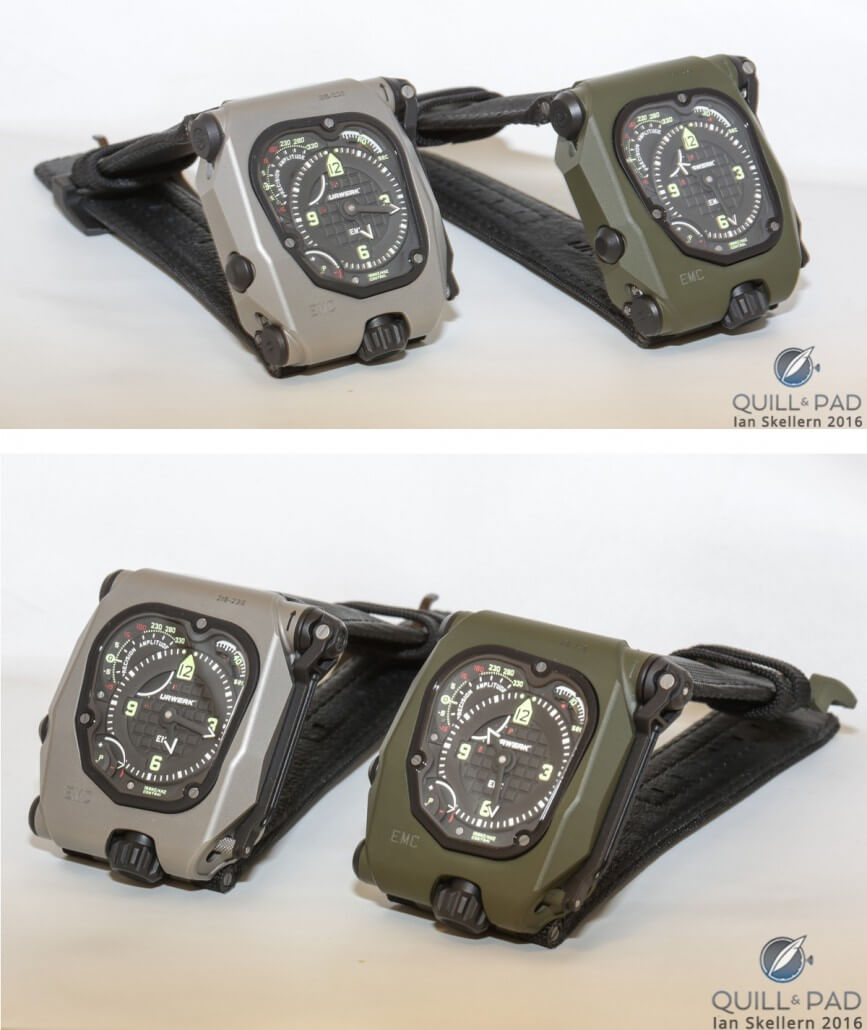
The two launch models of the Urwerk EMC2 in natural titanium/steel and green ceramic-coated titanium/steel
How to use in detail
Here is a detailed, step-by-step user manual that explains how this works. But remember, it’s just wind the crank, push the button, and read the indications.
The integrated crank handle is first unfolded from the case and turned gently around 20 times. This charges a super capacitor − no batteries here − and provides enough power for two readings.
The watch should then be placed flat for a few seconds to allow the movement to settle. Then the button on the left side of the case band is pushed to activate EMC2’s balance sensor and microprocessor.
And then the magic starts!
A hand, which until now has been hidden under the minute track between 9 and 12 o’clock, appears and points to either P (under 12 o’clock) to indicate insufficient power (more winding required) or δ (delta), which indicates processing is underway.
A few seconds later, the EMC hand will first move to just outside the 10 o’clock position to indicate precision in +/- seconds per day. And a couple of seconds later the same hand will move to indicate balance amplitude.
When the balance amplitude drops below 180° a red LED glows to indicate that EMC2’s movement requires servicing. But first the owner should check that the power reserve indicator is above the red zone, as insufficient power will also cause low amplitude.
It should also be noted that excessive amplitude − and in the case of EMC2, that’s anything above 330° − is also likely to indicate a problem, and that will also set off the red warning LED.
But there’s more to EMC2 than that.
If, for instance, the precision indicator displays minus five seconds per day, that only means that the movement is running five seconds per day slow in the flat position (or whatever position the watch was placed for the measurement). However, in a typical week for the user the watch is unlikely to spend all of its time in the flat position. Each owner will have his or her own average of positions depending on specific lifestyle and habits.
So to fine tune EMC2 Time Hunter to a specific individual’s lifestyle, the time should be set as precisely as possible and then the watch should be worn normally for a week or two. If the period started at 10:00 am on Monday then it should also finish at 10:00 am on Monday.
It should then be noted how many seconds the watch has gained or lost in that period and then divide those total seconds by the number of days to give information on how many seconds per day the movement has gained or lost.
Let’s say for example that the watch gained 42 seconds over a week, so that’s 49 ÷ 7 = +6 seconds/day. The watch is running 6 seconds fast per day for that person.
An EMC reading is then taken, which shows for example that the watch is gaining 4 seconds per day (in a flat position).
The precision adjustment screw is then turned 5 seconds slow and a new EMC reading taken to confirm that the movement is now losing 1 second per day (in a flat position).
Remember that the watch as worn over the week (not always in a flat position) used to gain 6 seconds a day, so by adjusting the rate from + 5 seconds/day to -1 second/day it should now be much more precise for the wearers specific lifestyle and activities.
Looks aren’t everything, but they count
But enough of the technicalities, lets look at a couple of EMC2’s aesthetic qualities. While the natural titanium/steel case is likely to be the first pick for many, I think that the olive green matches the ethos of the Time Hunter more closely as it does look like something from a NATO catalogue.
And, naturally, as we are talking Urwerk here, the green is no ordinary PVD coating but a ceramic paint that is baked on to the case at high temperature. This is the same ceramic paint that the U.S. army uses on its battlefield tanks!
It’s also worth mentioning that not only is EMC Urwerk’s first in-house movement, it is also a manufacture movement with most of the movement components − including that all-important balance wheel − produced in the brand’s own workshops.
EMC2 is the first sign of this high precision instrument evolving into a wristwatch. The duckling has not grown into a swan as yet, but it is certainly a nicer looking duck offering genuinely practical functionality.
Quick Facts
Case: 43 x 51 mm, grade 5 titanium/steel
Movement: manually wound in-house manufacture movement, optical balance sensor, integrated Maxon generator, super capacitor, microprocessor, 80-hour power reserve
Functions: hours, minutes, seconds; power reserve, precision indicator, amplitude indicator, precision adjustment screw
Limitation: 15 pieces in titanium/steel and 15 pieces in military green ceramic-coated titanium/steel case
Price: 110,000 Swiss francs (excluding taxes) in natural titanium/steel and 115,000 Swiss francs in military green titanium/steel








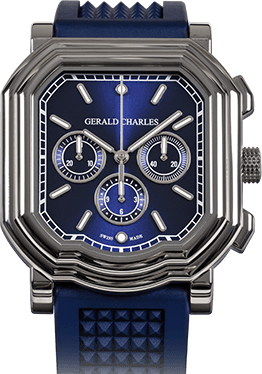
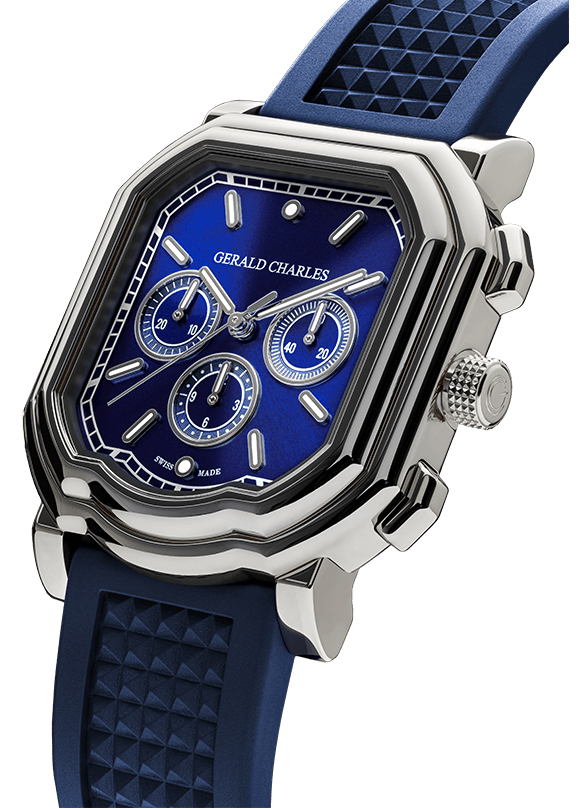

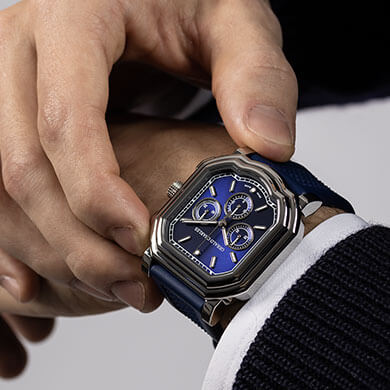
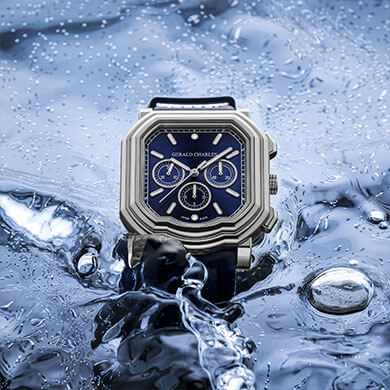

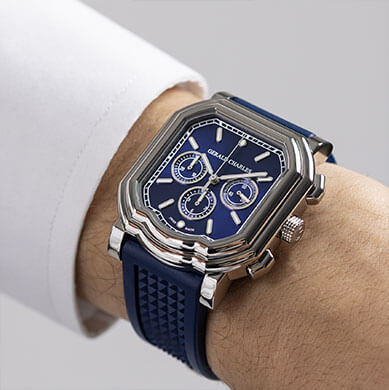



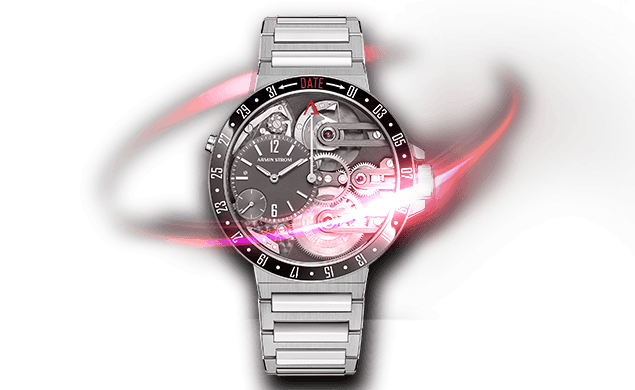
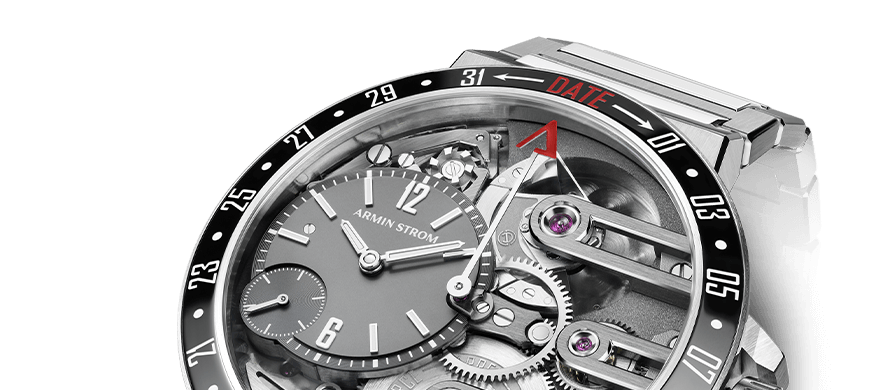
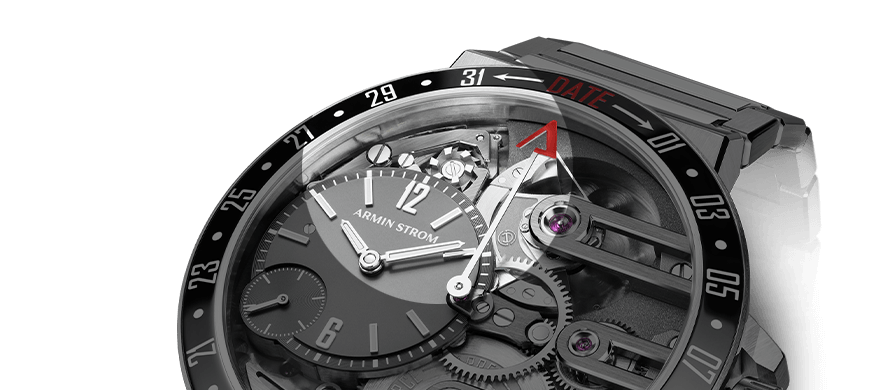


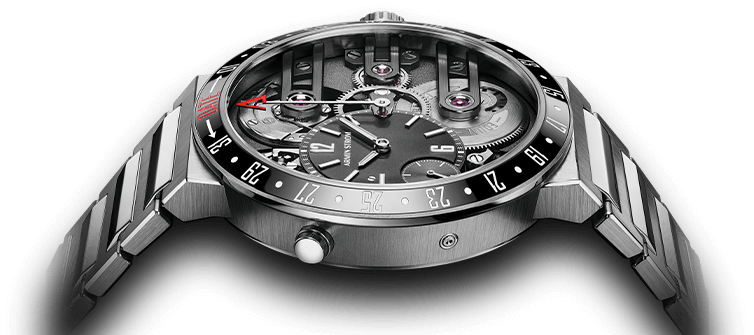
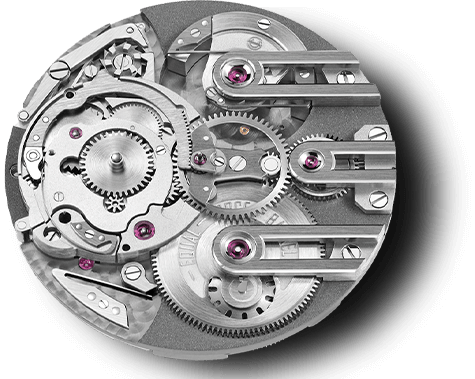

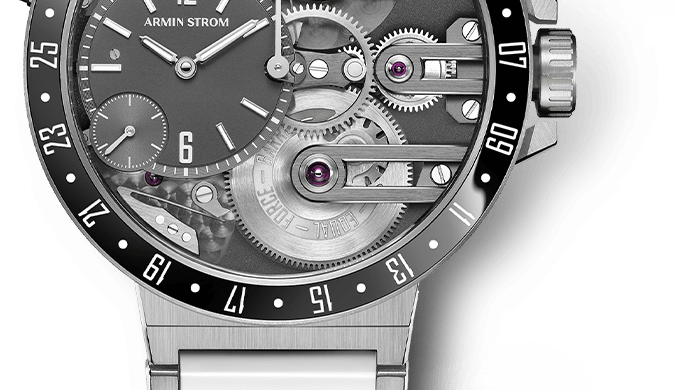
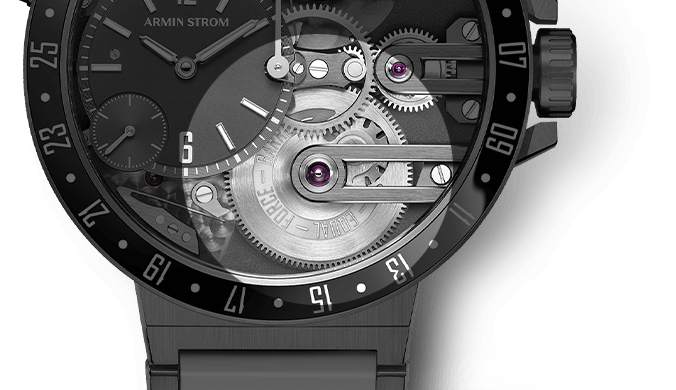


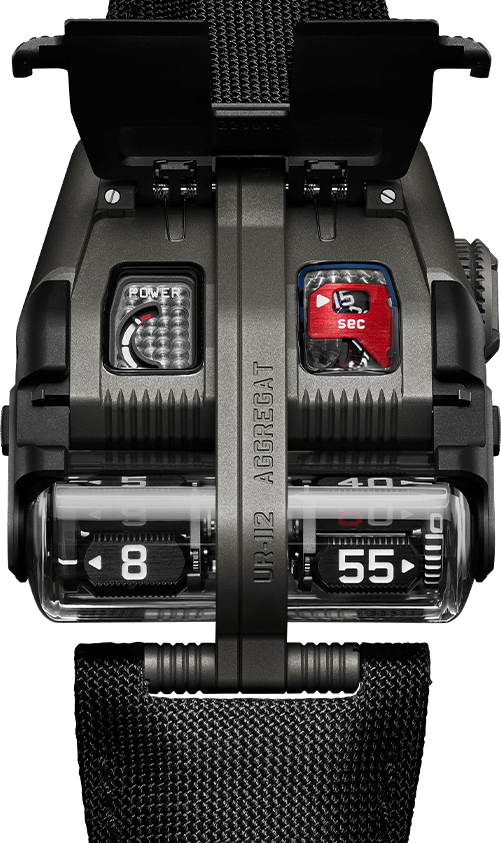

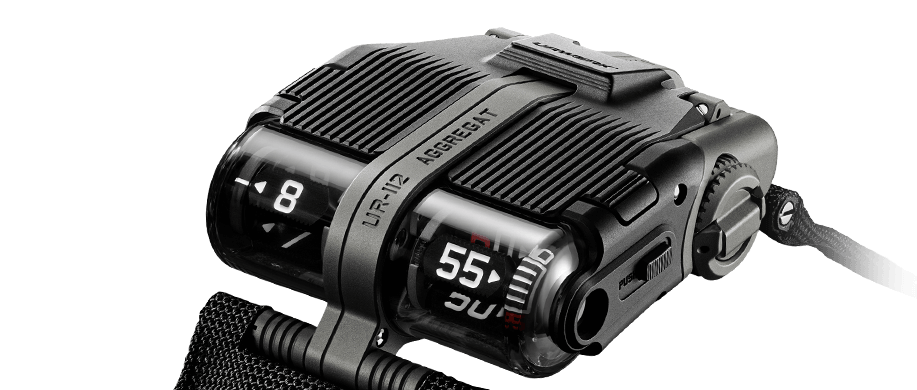
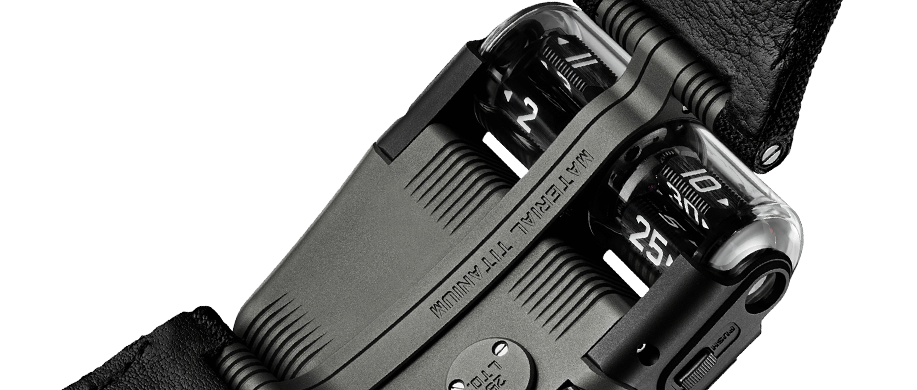
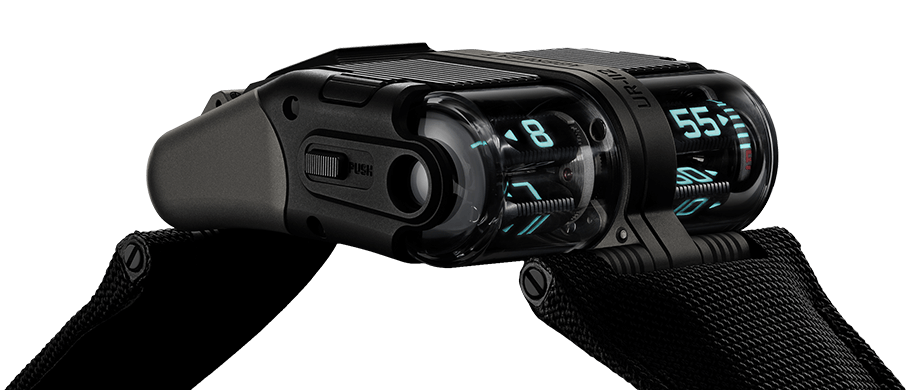


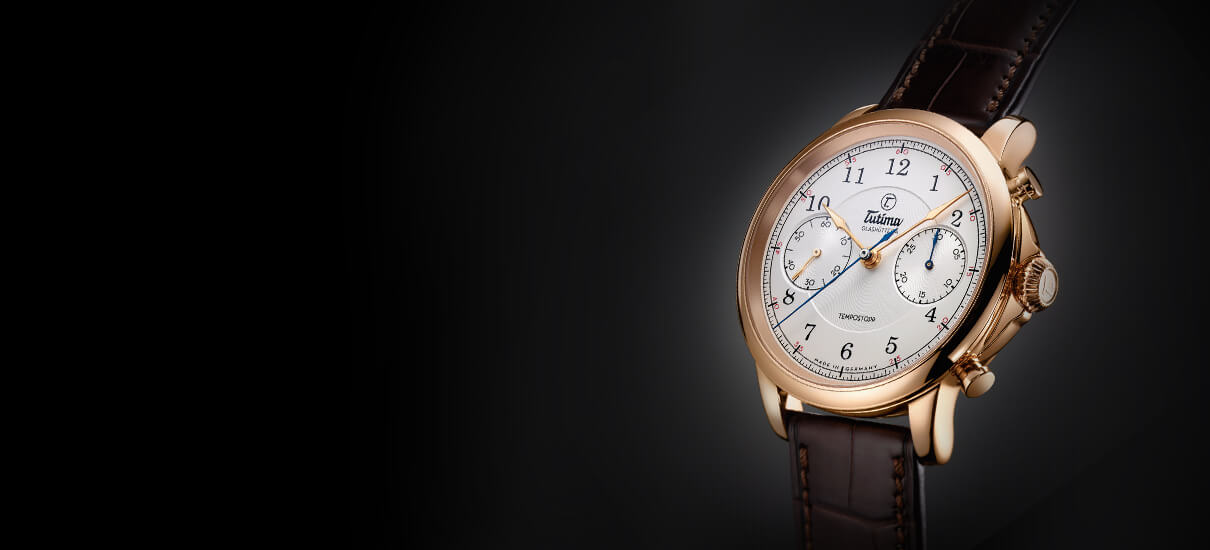

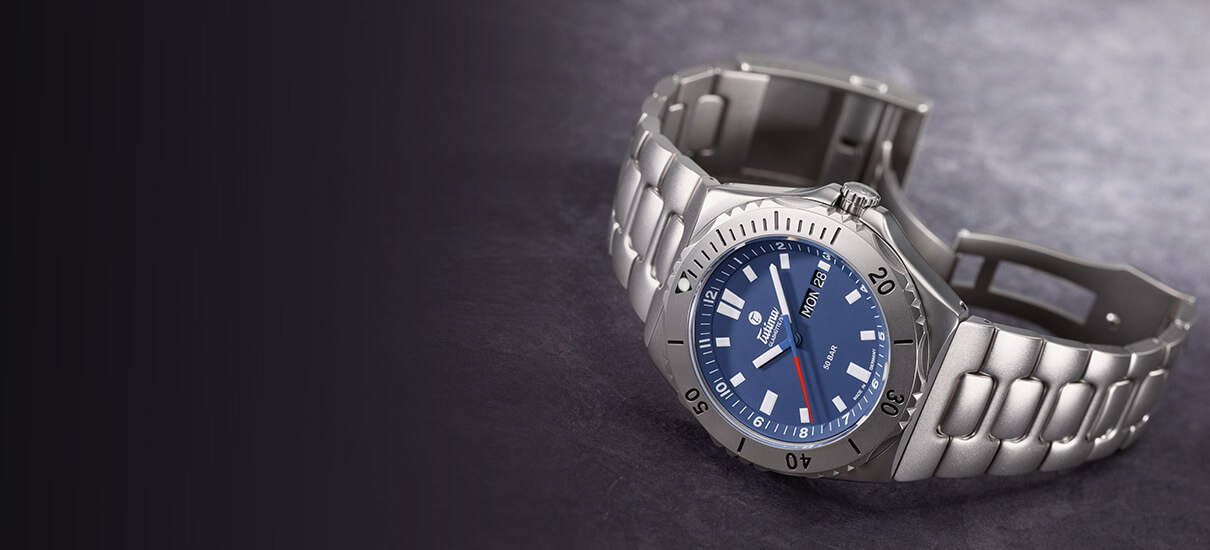

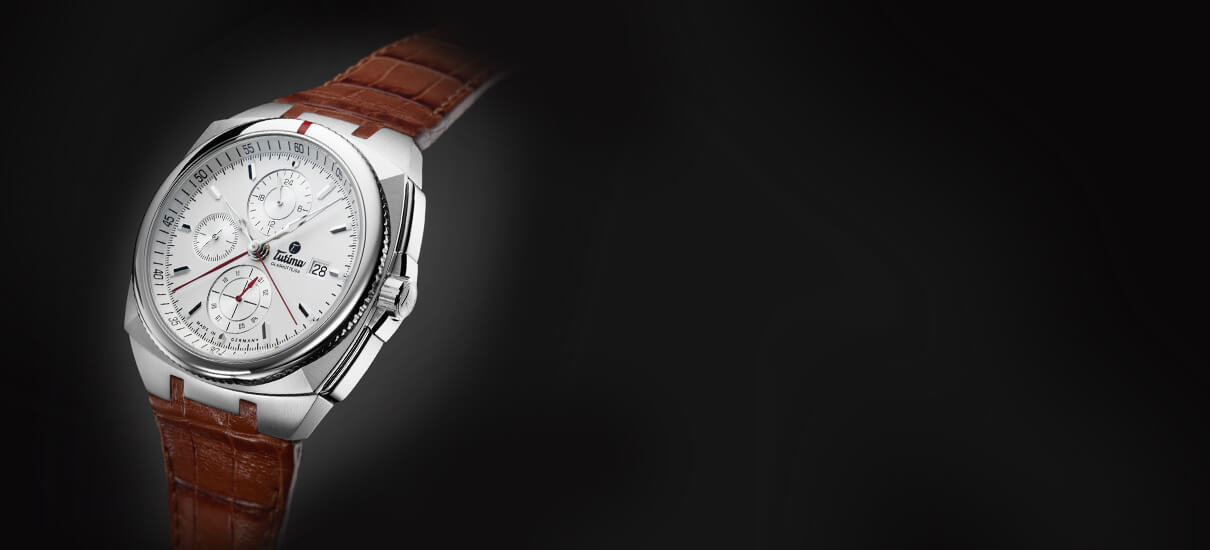

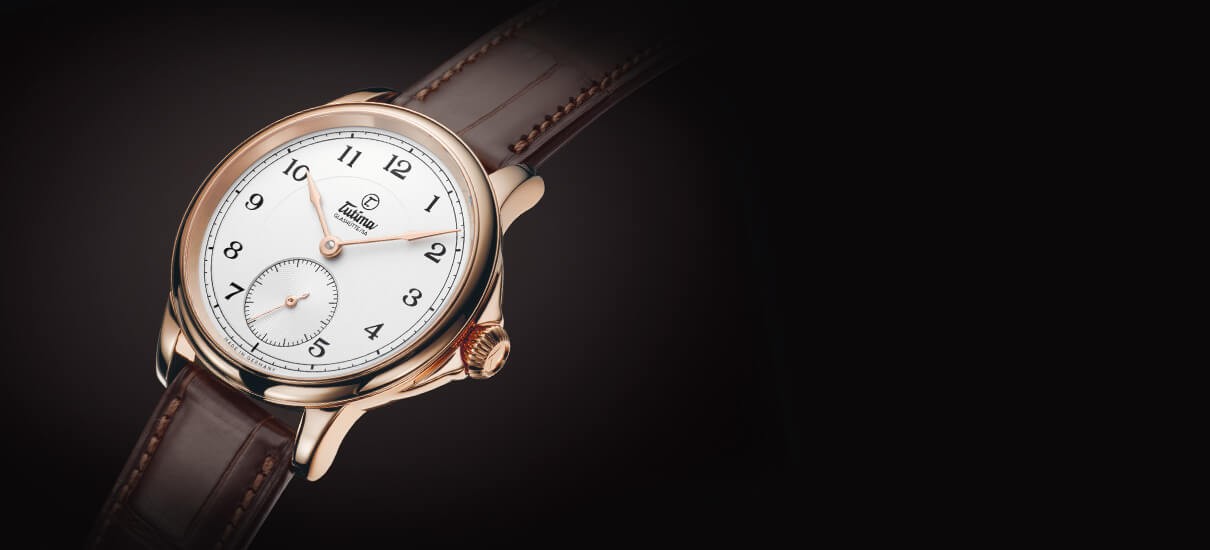

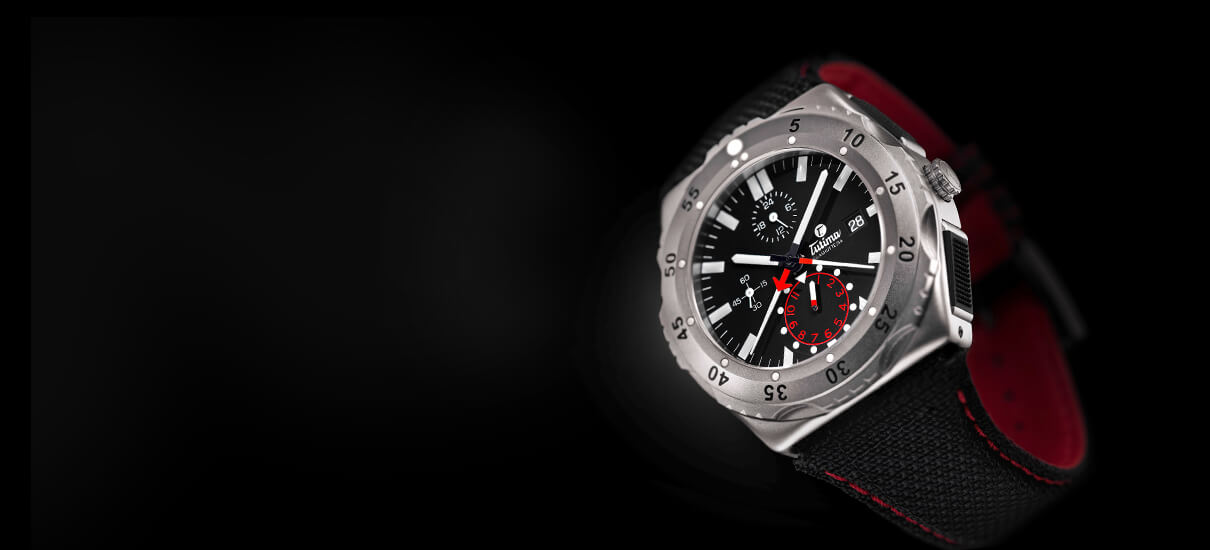

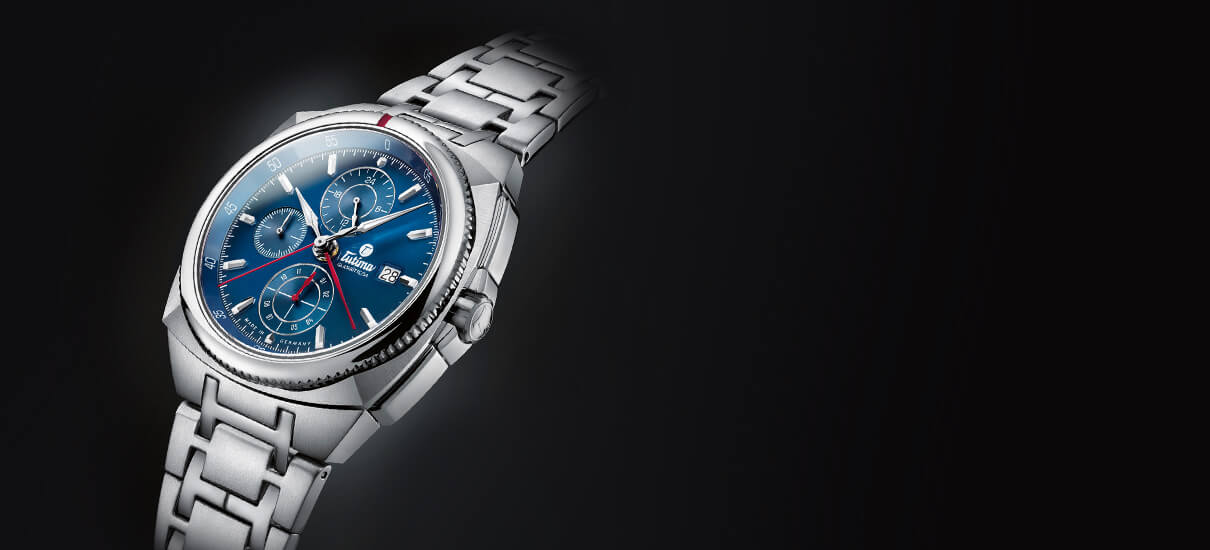

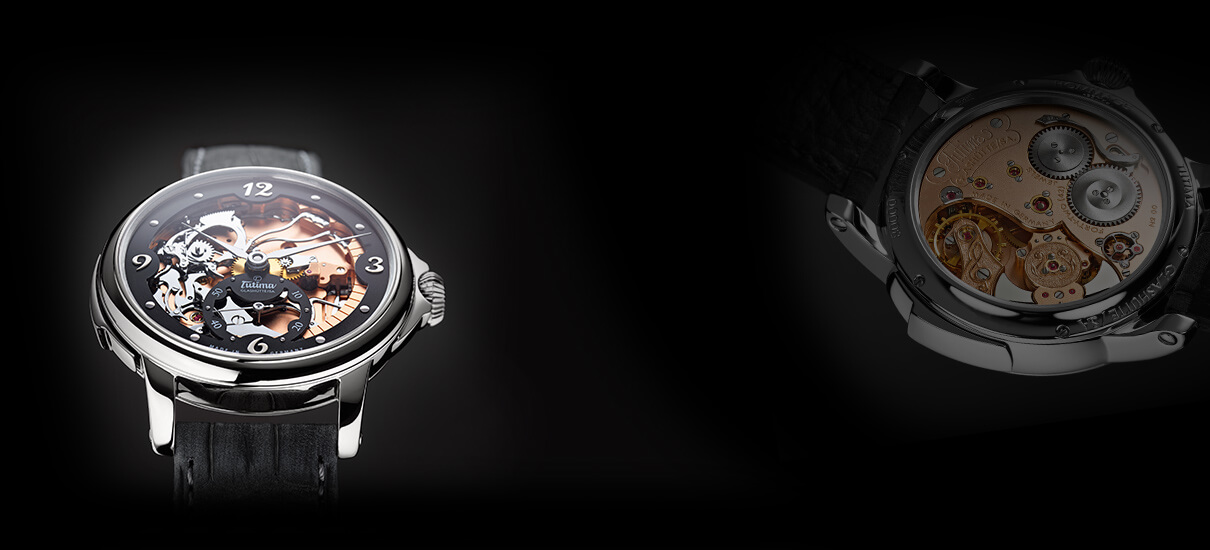



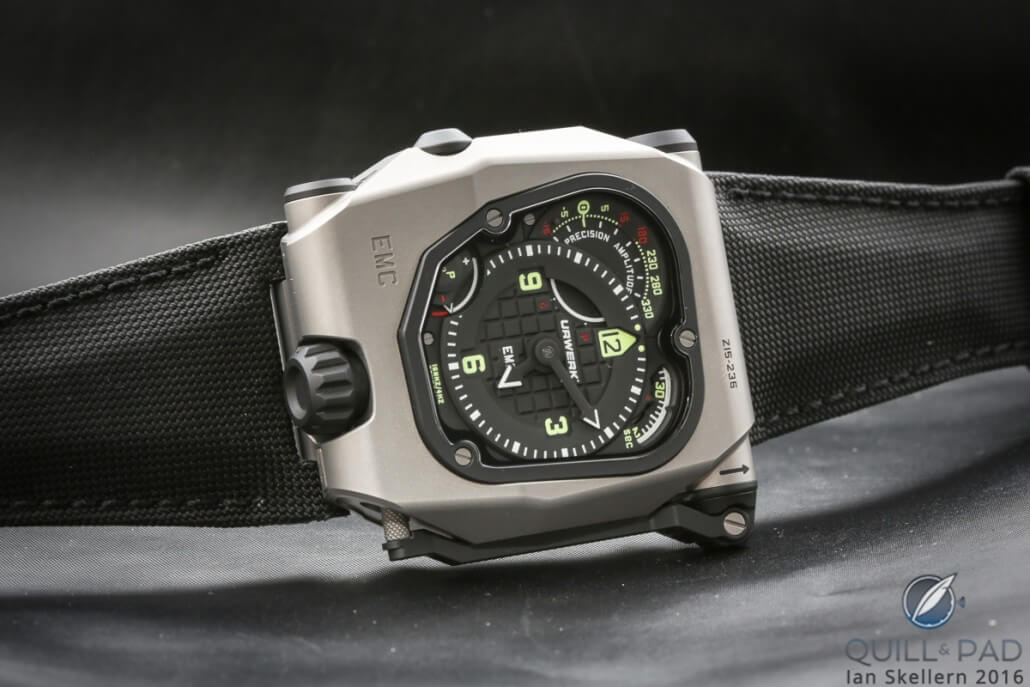
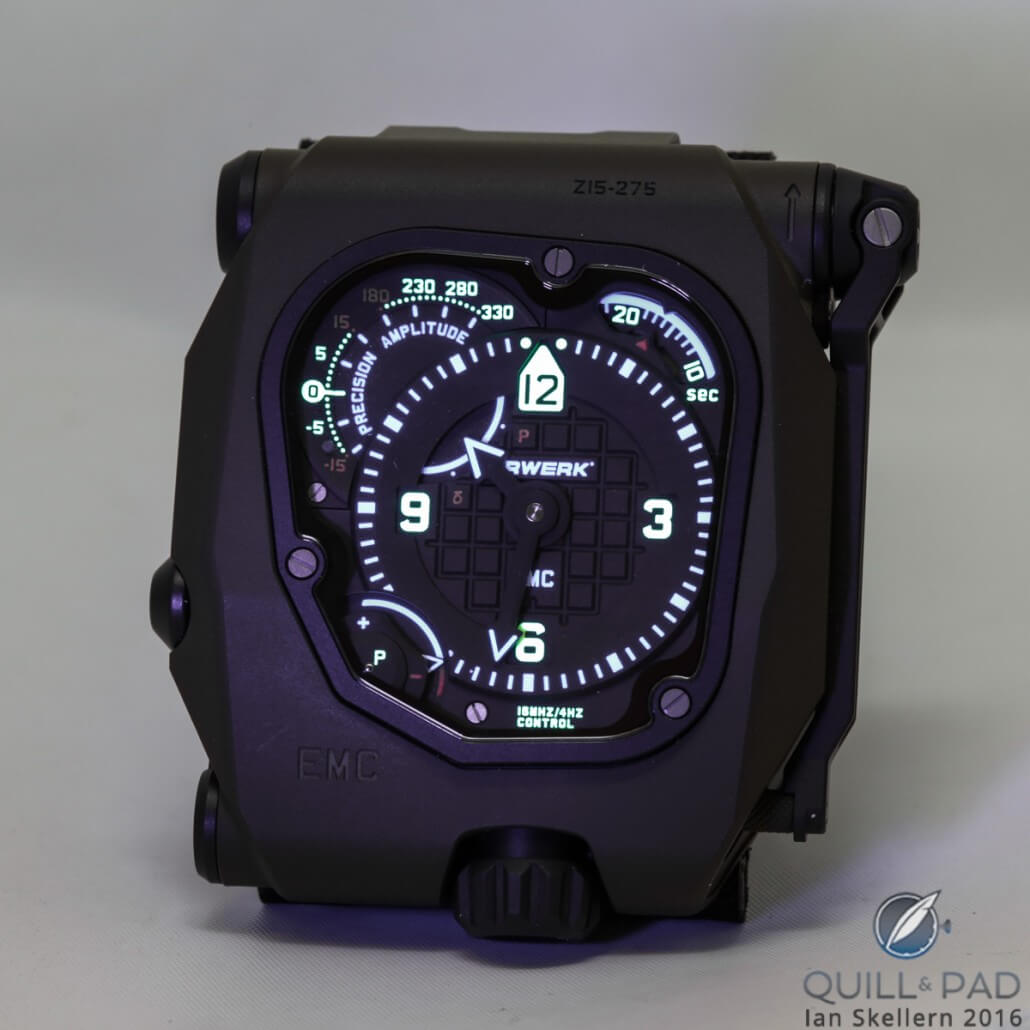
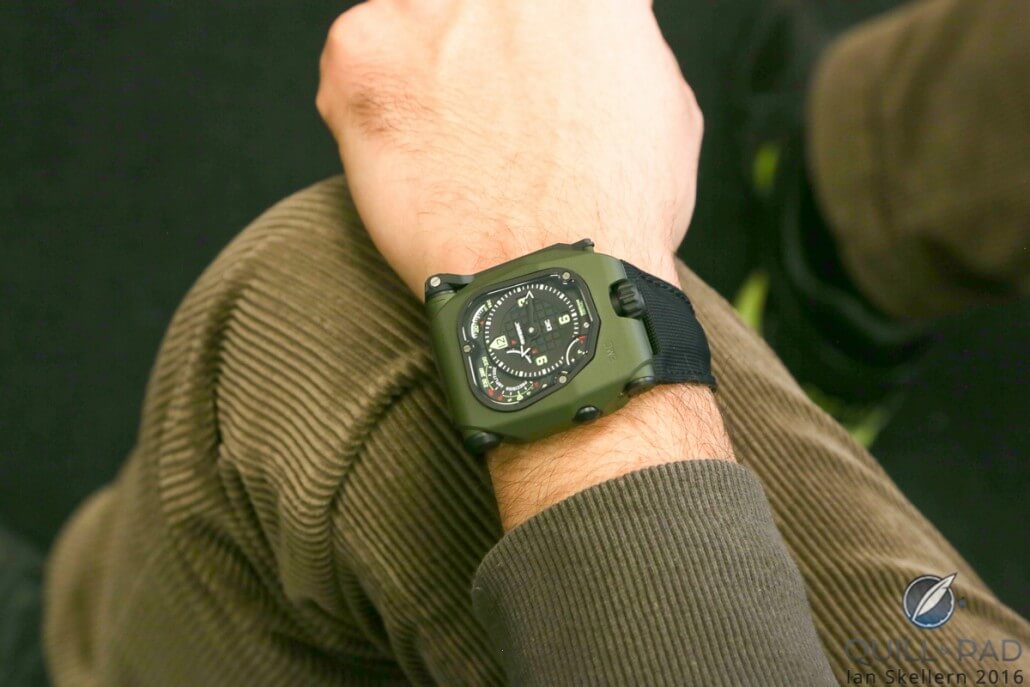
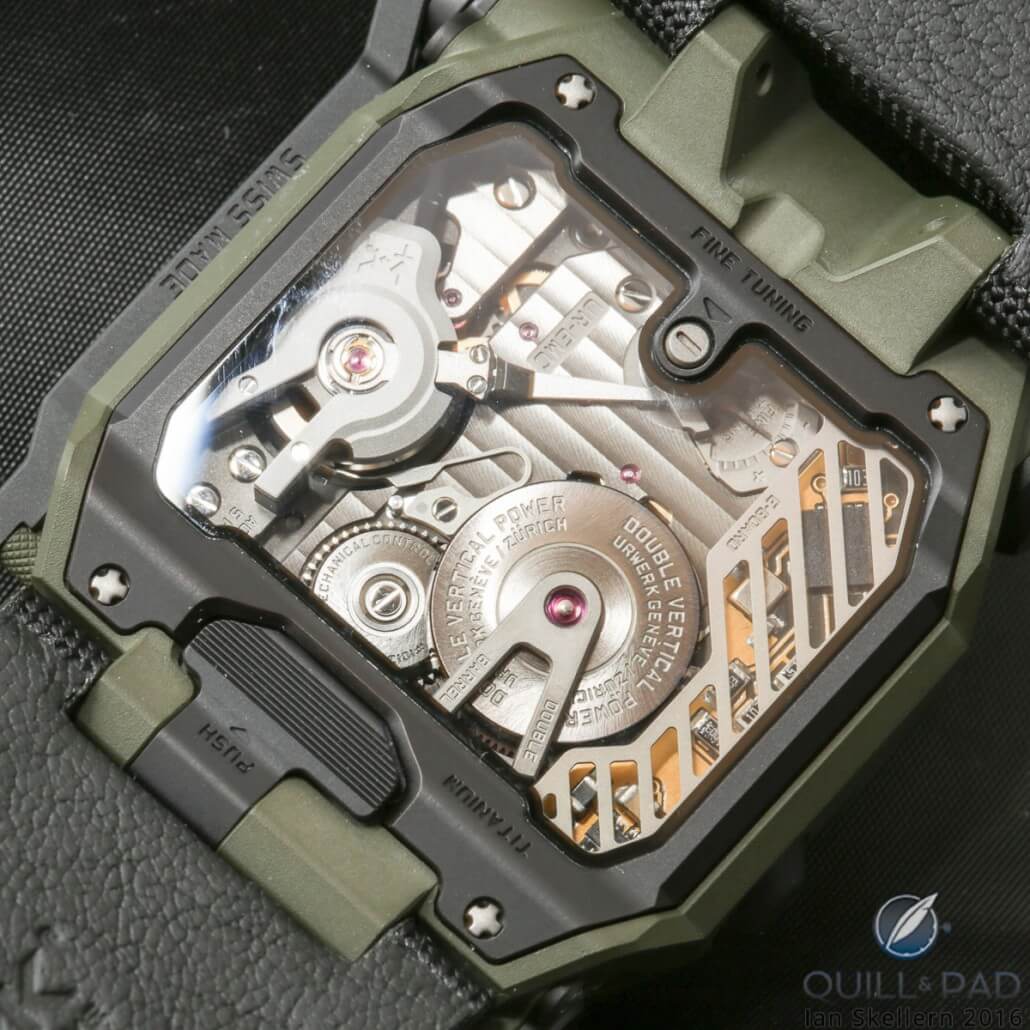
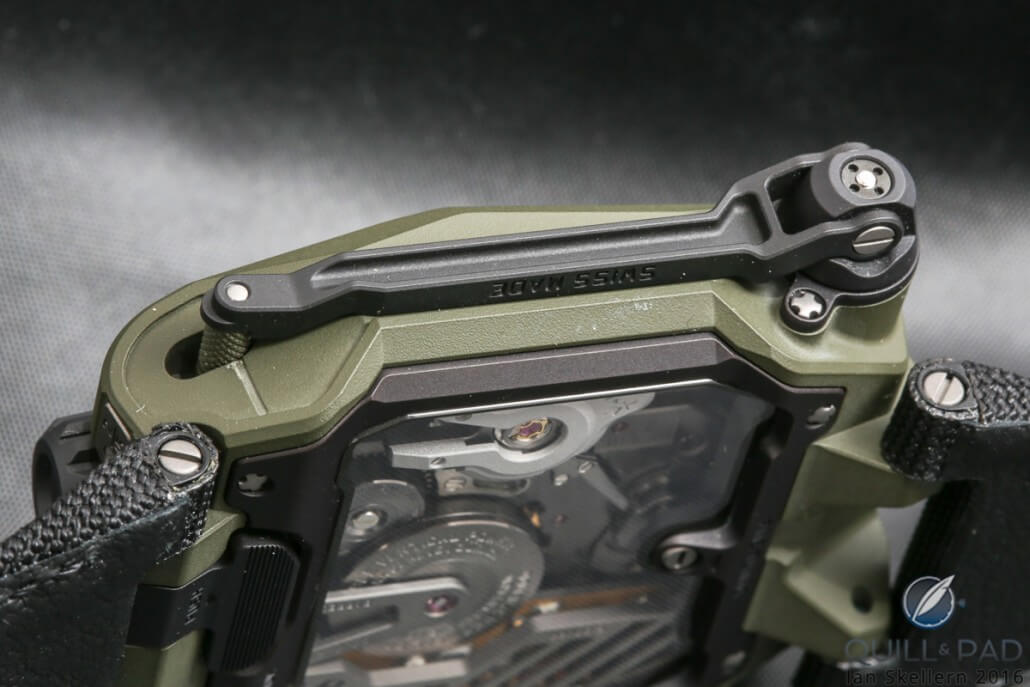
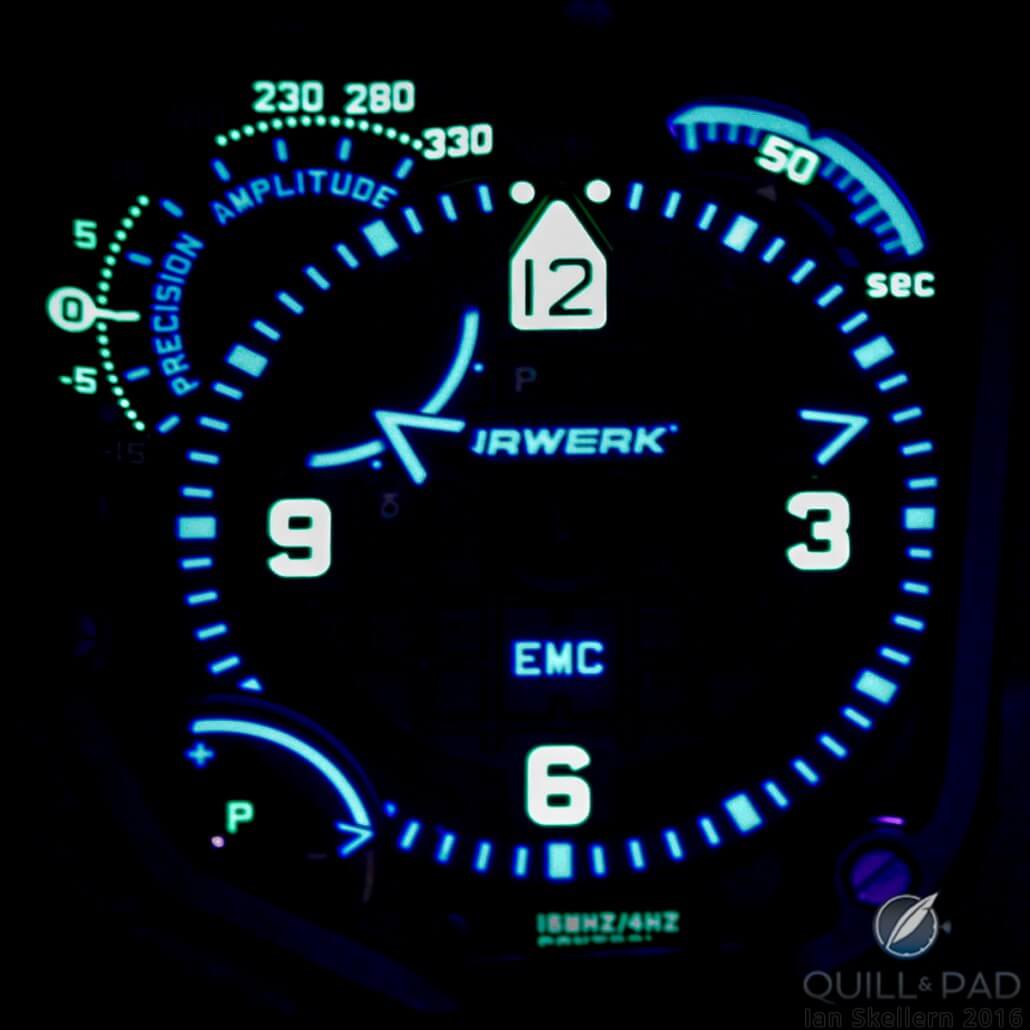
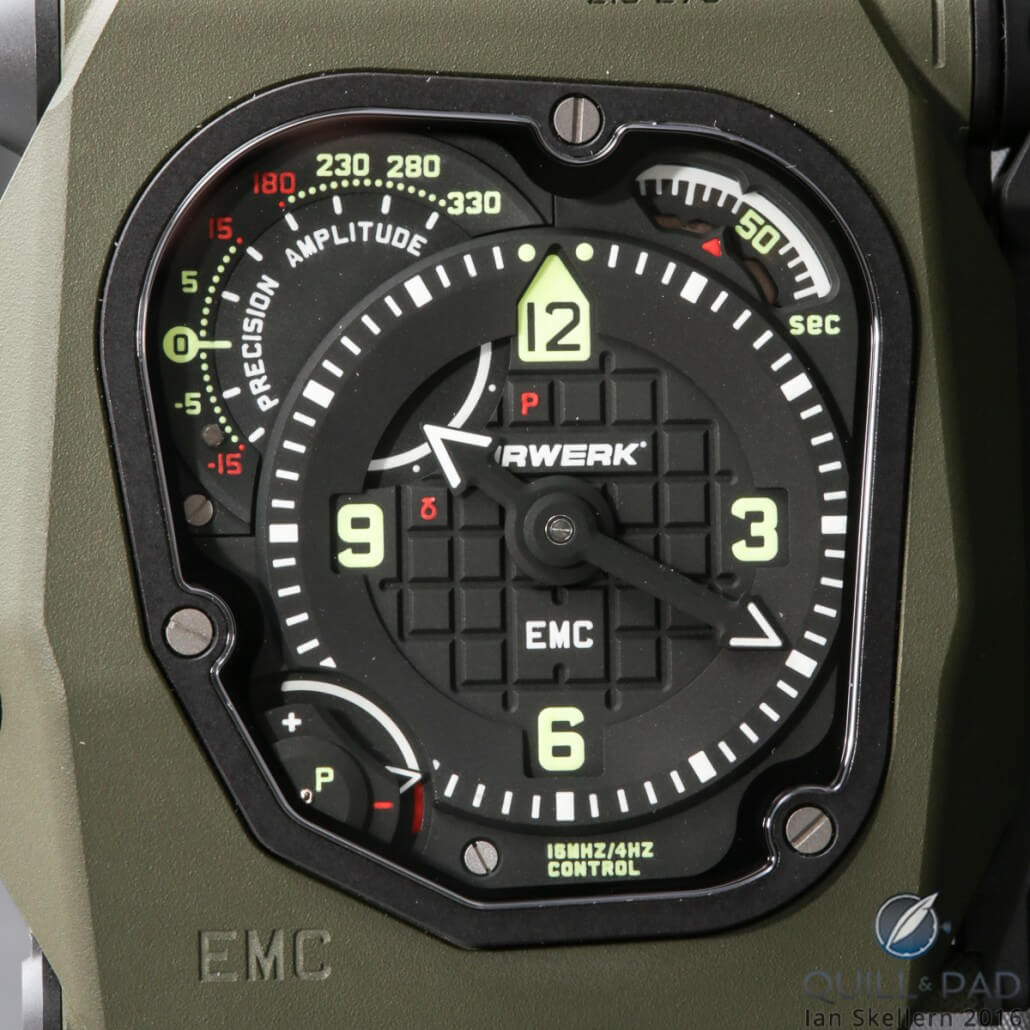
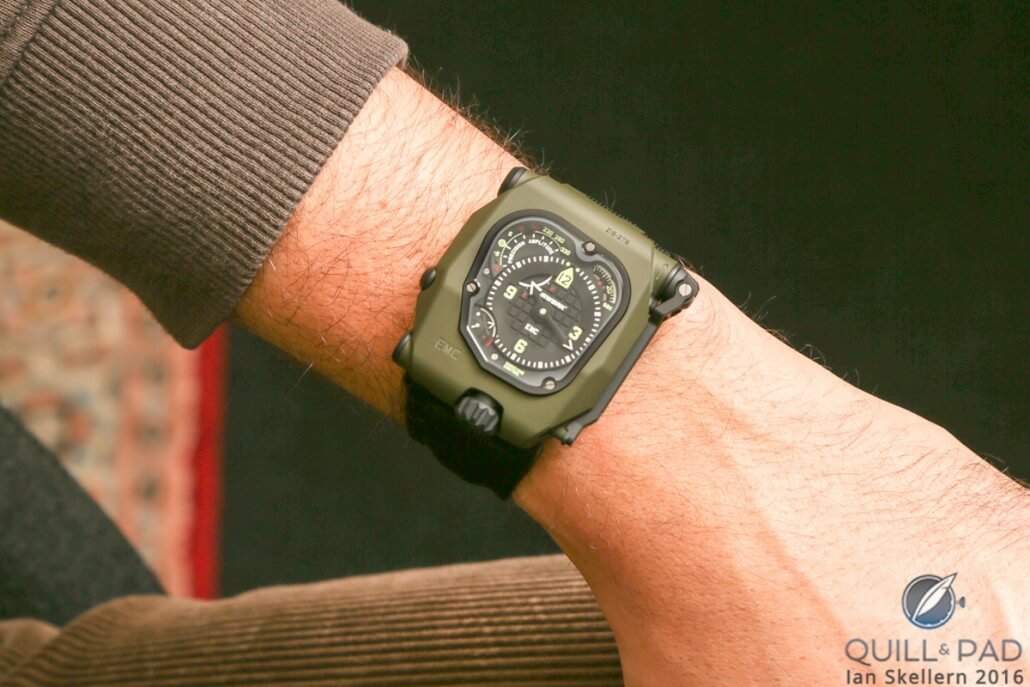
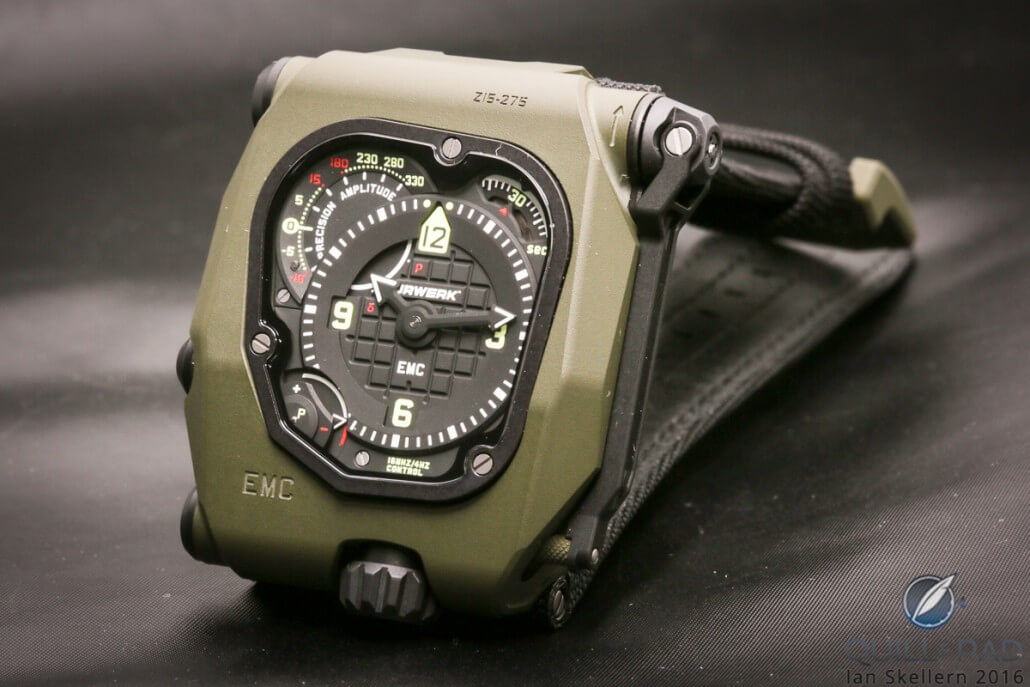
Trackbacks & Pingbacks
[…] For more on this watch, see Presenting EMC2 Time Hunter By Urwerk: Ugly Duckling Takes First Step To Swanhood. […]
[…] allows you to stare at the clever movement. You can learn all about this manufacture movement in Presenting EMC2 Time Hunter By Urwerk: Ugly Duckling Takes First Step To Swanhood and The Difference Between Urwerk’s EMC And A Toyota Prius (Not As Obvious As You May […]
Leave a Reply
Want to join the discussion?Feel free to contribute!